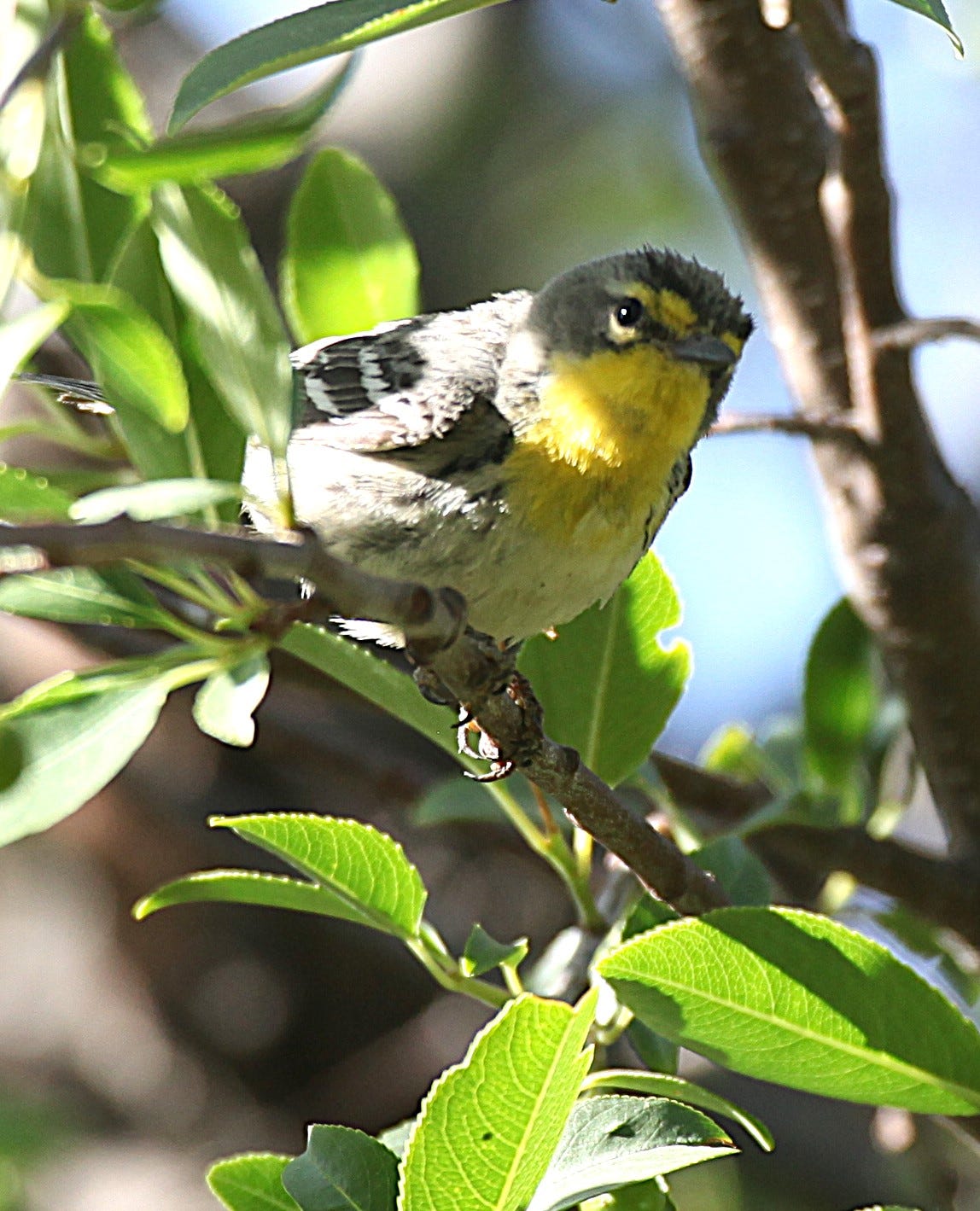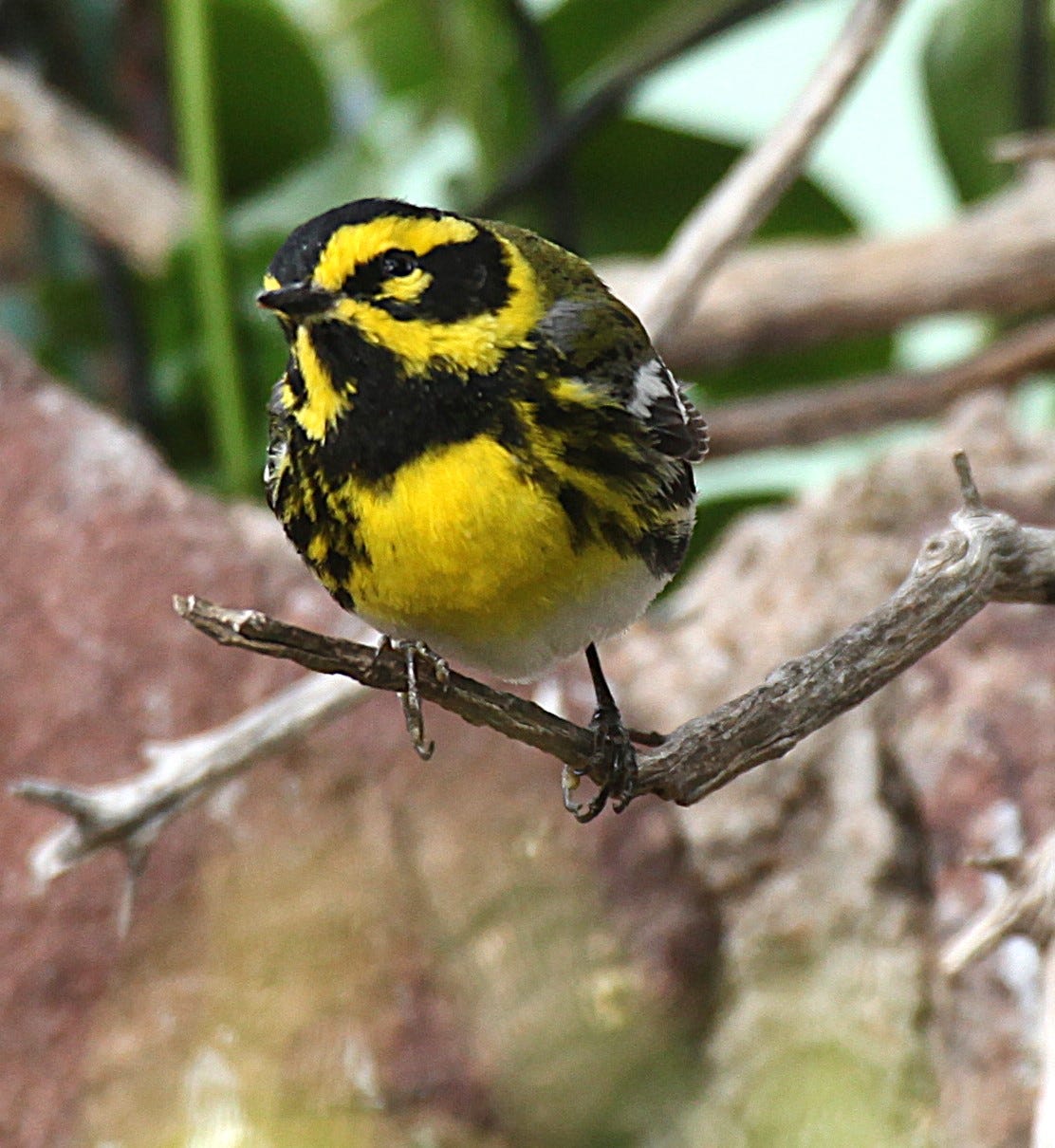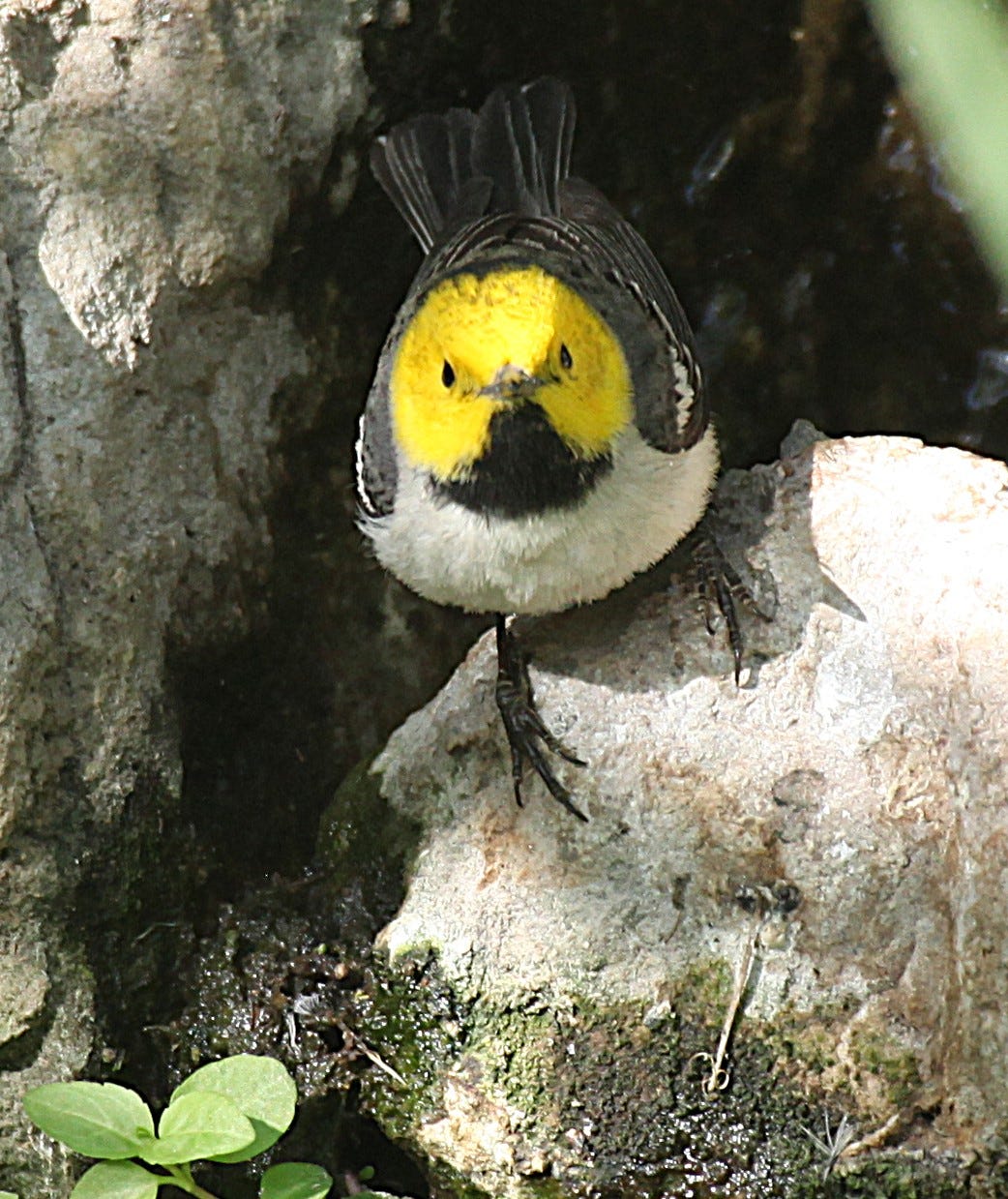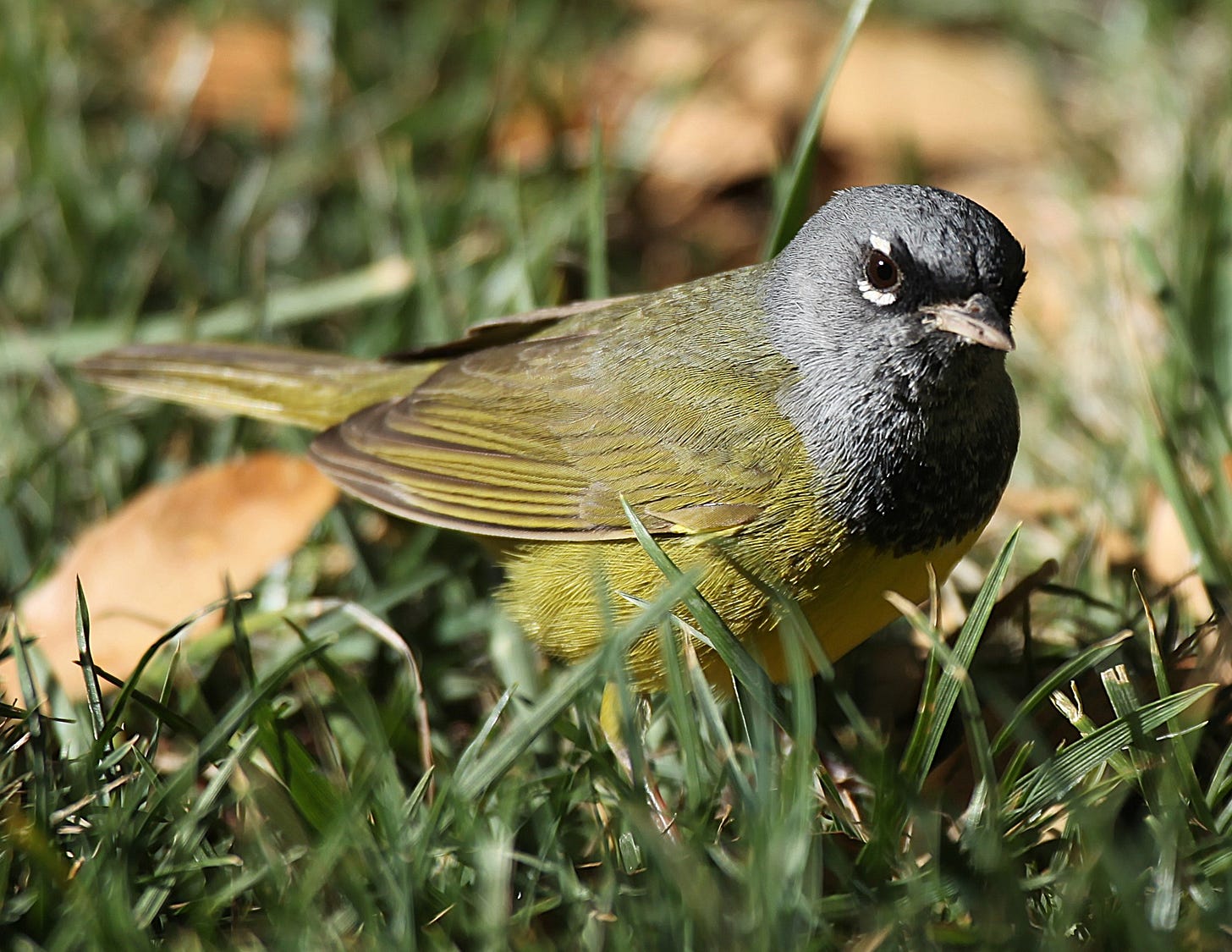
May 28, 2025
I marvel at the warblers tweezering insects with beaks perfectly adapted to the task. They move through the foliage, peering under each leaf to probe every niche and cranny in a way that says only “warbler.”
So deft and dexterous for a creature with beak and tongue rather than hands and fingers.
Even the finches and grosbeaks, manipulating shells for their kernels, husking millet and sunflower and the tiniest thistle seeds.
The utility of beaks when arms and hands become wings.
The Anna’s hummingbirds, too, feeding at the Lookout deck, wield slender bills perfectly shaped not by the throats of flowers but by the red plastic-petalled tubes of the nectar bottle. Evolution adjusting the beaks of birds.
After spending the early morning pajama hours on the back porch counting warblers and grosbeaks, I walk down to the Lookout to watch the hummingbirds with evolution on my mind. Last week, the journal Global Change Biology published an article about how hummingbird feeders have changed the bill size and shape of Anna’s hummingbirds.
Dramatically.
“The feeders are what really make the difference,” says Alejandro Rico-Guevara, one of the authors of the study.
Feeders—or I should say humans!—have become an evolutionary force.
By combing through decades of museum hummingbird specimens in California, the researchers discovered that as backyard hummingbird feeders proliferated after World War II, Anna’s hummingbird beaks got longer and larger, an adaptation to take advantage of a much greater nectar source than flowers provide. “It’s like having a large spoon to eat with,” Rico-Guevara says.
And even more interesting is the speed of evolution’s flywheel. By the 1950s, the hummingbirds were noticeably different from those of the 1930s—changes occurring in only 10 generations!
I’m reminded of Jonathan Weiner’s seminal book, The Beak of the Finch, how Darwin’s finches on the Galapagos Islands even today demonstrate that evolution is neither rare nor slow but operates as we watch.
What a marvelous thing is a beak! As the month draws to a close, today I celebrate all things with beaks. Especially warblers.




Thanks for joining me this migration! More to come as we move into the summer months and the monsoon season that begins June 15th! I’m watching the skies for rain—and birds!





Especially warblers.... the feathered jewels of our migration and summer seasons. And we are so fortunate to see them captured in your sharp photos, loaded with personality too! The beaks of Anna's, I also wrote about that evolution for the DP times, seeing it in other birder news an hearing it on NPR interview press/play. news flies! Good thing there are 31 days in May Ken, 3 days to invite those 5 new species. Good luck!!
Very interesting about the evolution of the Anna's beaks. I wonder if other hummer species have followed suit.